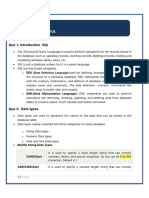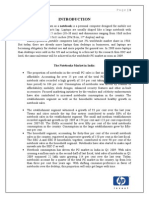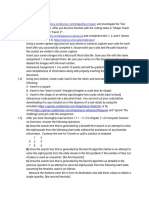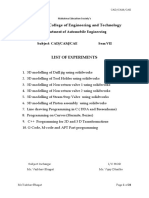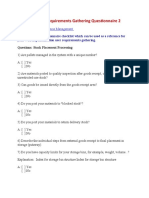0% found this document useful (0 votes)
15 views30 pagesMysql
A database is an organized collection of structured information managed by a database management system (DBMS), with types including relational (e.g., MySQL) and non-relational (NoSQL) databases. MySQL is an open-source relational database management system that uses SQL for data operations and supports creating, reading, updating, and deleting data. The document also covers SQL commands, data types, constraints, and various operations such as joins, subqueries, and views.
Uploaded by
gkundu091000Copyright
© © All Rights Reserved
We take content rights seriously. If you suspect this is your content, claim it here.
Available Formats
Download as PDF, TXT or read online on Scribd
0% found this document useful (0 votes)
15 views30 pagesMysql
A database is an organized collection of structured information managed by a database management system (DBMS), with types including relational (e.g., MySQL) and non-relational (NoSQL) databases. MySQL is an open-source relational database management system that uses SQL for data operations and supports creating, reading, updating, and deleting data. The document also covers SQL commands, data types, constraints, and various operations such as joins, subqueries, and views.
Uploaded by
gkundu091000Copyright
© © All Rights Reserved
We take content rights seriously. If you suspect this is your content, claim it here.
Available Formats
Download as PDF, TXT or read online on Scribd
/ 30




